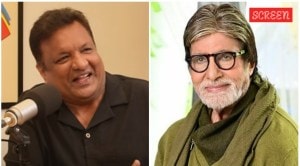Cost of getting House live on air: Rs 120 cr
What would it cost to realise Speaker Somnath Chatterjee’s dream of bringing live to viewers the activities of Parliamentarians they vo...

What would it cost to realise Speaker Somnath Chatterjee’s dream of bringing live to viewers the activities of Parliamentarians they voted to power? Rough estimates indicate that transmitting two channels — one for the Lok Sabha and the other for the Rajya Sabha, round the clock — would work up to Rs 120 crore annually for each of the channels. This would be minus the cost for hiring a transponder if ISRO chooses to waive the amount.
Roughly, the costs work out like this: To produce 10 hours of original programming, the Prasar Bharati Corporation requires Rs 50 lakh per day per channel. Add to this the cost of uplinking, which has to be eventually borne by somebody, which is around Rs 10 crore, and the manpower required to make the programmes.
But what will the channels transmit when Parliament is no longer in session? ‘‘Parliament is in operation for 120 days a year. It would be difficult to fill up appropriate programming for the remaining part of the year,’’ sources said.
For a start, the Corporation is working on the idea of getting each MP to unleash his vision for developing his constituency. ‘‘We can look into the wealth of information and archival material that Parliament has to telecast to the viewers,’’ official sources said. They have to be on their toes once the Budget session is over.
The Corporation has been told that the current session will have to be managed on its own. Real work will begin after January.
Perhaps the Speaker can look at an American example. C-Span is a private non-profit public service of the cable television industry with no funding from the Government, which started in 1979, to provide live coverage of the US House of Representatives. It was in 1980 that the channel covered its first presidential election.
The channel, says its website, has a huge following. But there are problems. ‘‘Neither the Congress nor the FCC has not yet made a decision on the proposed dual must carry rule — a requirement that cable operators give every local broadcast station a second channel in their system,’’ a message posted on http://www.C-Span.org reads.
And this is something that DD has to negotiate with cable operators. With cable operators pushing entertainment channels on the prime band, someone has to hardsell the two channels of Parliament.
Finally, someone has to think fast on how to keep the channels going round the clock. DD has an unhappy track record when it comes to starting something without adequate preparation.
Photos




- 01
- 02
- 03
- 04
- 05



























